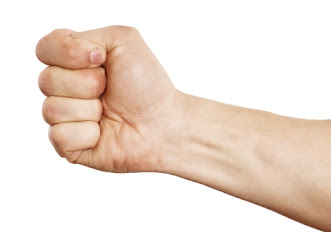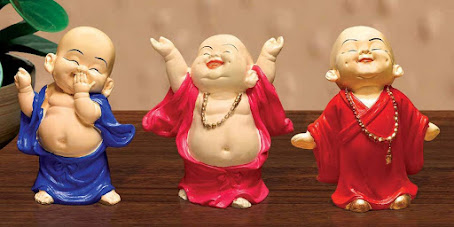Strong bones support your participation in social activities, such as dancing, and sports, including golf and tennis. Strong bones carry you through busy work days, no matter how exhausted your body may be. Without strong bones, children could not enjoy playing, running, jumping, climbing, tumbling and participating in all the fun-filled physical activities they love.
Calcium, vitamin D and magnesium are key
bone health nutrients that require special attention to ensure that you meet
your daily requirement.
Bone health: A healthy
diet promote overall health as well as keeps your bones healthy.
Bones
support your body and allow you to move. They protect your brain, heart, and
other organs from injury.
You must add plenty of vegetables to your diet,
especially those rich in vitamin A and C. Vitamin C helps in collagen formation
that increases bone mineralization.
“What we eat and the activities that we do
throughout the years have an impact on bone health,”
But bone health is something we should pay
attention to throughout life. Whether you’re 17 or 70, eating right, exercising
and getting enough calcium and vitamin D can increase bone strength and
minimize bone loss.
Facts about Bones
206
the number of bones in your body (We’re born with more than 300 bones but as we
grow some of the bones grow together leaving us with 206.)
The ear
the location of the smallest bone in your body (Called the stirrup bone, it’s
the size of half a grain of rice.)
12 weeks
the average amount of time it takes a broken bone to heal
More than 200 million
the number of people in the world affected by osteoporosis and low bone
density.
Osteopenia (know called low bone
density)
the condition where bone mineral density is low. This may not be an indication
of bone loss.
12
the number of bones in your face
8
the number of bones in each wrist (also known as the carpals)
Fracture
what a broken bone is called
20
the age at which most young adults have approximately 98% of their skeletal
mass
Coccyx
the medical term for your tailbone
50% water and 50% solid matter
the composition of your bones
The leg
the location of the largest bone in your body (It is called the thighbone or
femur.)
What makes you grow
growth plates at the end of long bones in your arms and legs stay open, you grow.
Bone is living tissue
The collagen in bone constantly replenishes itself. So, about every 7 years, you have a new skeleton.
What’s a funny bone, anyway?
It’s not even a bone. It’s your ulnar nerve, which runs inside your elbow. Hitting it triggers a surprisingly tingling, prickly pain.
Where you have the
most bones
The 54 bones in
your hand, fingers and wrists allow you to write, use a smartphone and play
piano.
Bone health
Around 99% of the calcium in the human body is in the bones and teeth. Calcium is essential for the development, growth, and maintenance of bone.
Bone Density also
called: Bone mass
Strong bones are important for your health. A bone mineral density (BMD)
test is the best way to measure your bone health. It compares your bone
density, or mass, to that of a healthy person who is the same age and sex as
you are. It can show
- Whether
you have osteoporosis, a disease that makes your
bones weak
- Your
risk for breaking bones
- Whether
your osteoporosis treatment is working
Low bone mass that is not low enough to be osteoporosis is sometimes called osteopenia. Causes of low bone mass include family history, not developing good bone mass when you are young, and certain conditions or medicines. Not everyone who has low bone mass gets osteoporosis, but they are at higher risk for getting it.
If you have low bone mass, there are things you can do to help slow down
bone loss. These include eating foods rich in calcium and vitamin D and doing weight-bearing exercise such as
walking, tennis, or dancing. In some cases, your doctor may prescribe medicines
to prevent osteoporosis. Bone density changes over time. Throughout childhood,
adolescence, and early adulthood, the bones absorb nutrients and minerals,
gaining strength.
Peak Bone Mass
Our maximum bone size and strength is called peak
bone mass. Genes play a large role in how much peak bone we have. For example,
the actual size and structure of a person's skeleton is determined by genetic
factors.
Although peak
bone mass is largely determined by our genes, there are lifestyle factors —
such as diet and exercise — that can influence whether we reach our full bone
mass potential.
The best time to build bone density is
during years of rapid growth. Childhood, adolescence, and early adulthood are
the times when we can significantly increase our peak bone mass through diet
and exercise.
Bone Strength and Calcium
Your body needs calcium to keep your bones dense and strong. Low
bone density can cause your bones to become brittle and fragile. These weak
bones can break more easily, even without an obvious injury.
Vitamin D helps your body absorb calcium. Eat foods that provide
the right amounts of calcium, vitamin D, and protein. This kind of diet will
give your body the building blocks it needs to make and maintain strong bones.
In addition to getting enough calcium and vitamin D, you can
reduce your risk of developing osteoporosis by exercising regularly and
avoid smoking and excessive alcohol use.
Healthy Bones
always
Bone health is important at every age and
stage of life. The skeleton is our body's storage bank for calcium — a mineral that
is necessary for our bodies to function. Calcium is especially important as a
building block for bone.
We must get calcium from the foods we eat. If we do not
have enough calcium in our diets to keep our bodies functioning, calcium is
removed from where it is stored in our bones. Over time, this causes our bones
to grow weaker.
Loss of bone strength can lead to osteoporosis — a
disorder in which bones become very fragile and more likely to break. Older
adults with osteoporosis are most vulnerable to breaks in the wrist, hip, and
spine. These fractures can seriously limit mobility and independence.
Fortunately, there are many things we can do at every age
to keep our bones strong and healthy.
No matter
your age, adequate calcium intake and exercise can limit bone loss and increase
bone and muscle strength.
Consuming calcium throughout the day
Calcium is the primary nutrient for bone health. As the bones break down and grow each day, it is essential that people get enough calcium in their diets.
Calcium requirements
The recommended upper limit for calcium is 2,500 mg a day for adults 19 to 50. For those 51 and older, the limit is 2,000 mg a day. The best way to absorb calcium is to consume small amounts throughout the day, rather than eating one high-calcium meal per day.
It is best to get calcium through the
diet, unless a doctor advises otherwise. Foods’s rich in calcium include:
- milk.
- cheese.
- yogurt.
- some leafy greens, such
as kale.
- beans.
- sardines or small saltwater
fish.
Role of calcium in the body
Calcium plays
a role in:
- strengthening
bones and teeth
- regulating
muscle functioning, such as contraction and relaxation
- regulating
heart functioning
- blood
clotting
- transmission
of nervous system messages
- enzyme
function.
Nutrients that contribute to good bone mass
A good diet is a big factor contributing to healthy bones. The following nutrients play important roles:
- Calcium
- Vitamin
D
- Vitamin
K
- Potassium
- Magnesium
Calcium is the most
well-known ingredient for strong bones. The nutrient is famously found in
dairy, but also in leafy greens such as spinach, beans, fish with bones
(sardines, canned salmon), oatmeal and many other foods. Calcium alone is not
enough. Other nutrients are needed for calcium to be able to its job well. For
starters, your body needs vitamin D to absorb it. Vitamin D is found in shrimp,
fatty fish and eggs. Your body also produces vitamin D when you are exposed to
the sun. Many people have too low levels of this vitamin (especially in the
winter), so supplementing could be wise. The next ingredient needed to help
calcium strengthen your bones is potassium. Potassium neutralizes acids that
break down calcium. It’s in potatoes (don’t remove the skin), sweet potatoes,
oranges, yogurt and bananas. Magnesium is necessary for both calcium and
vitamin D to work efficiently. Good sources of magnesium are spinach, tomatoes,
potatoes, sweet potatoes and artichokes. Two other vitamins which are good for
your bone mass are vitamin K and C. Eat leafy greens, fruits and peppers and
your body will be getting these essential nutrients.
Some of the factors that can reduce calcium in your
bones and lower your bone density (weaken your bones) include:
- high-salt
diet
- more
than six drinks per day of caffeine-containing drinks – for example,
coffee, cola and energy drinks (and, to a lesser extent, tea)
- excessive
alcohol intake
- very
low body weight
- very
high intakes of fiber (more than 50 g per day, from wheat bran)
- low
levels of physical activity
- low
levels of vitamin D – people who are housebound or cover their bodies
completely when they are outside are at increased risk
- smoking.
“Your bones and your skeleton are truly amazing,”. “How they grow, repair themselves and keep your entire body positioned as you move through your life makes it so important that you do your best to keep them healthy. Making sure you eat well and exercise as often as you can will help ensure they support you as long as you need them to,”.
















